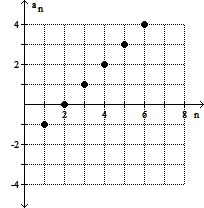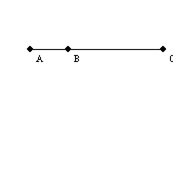Find the general term of the arithmetic sequence then find the indicated term of the sequence. Assume that the domain of the sequence is all natural numbers.Find an and a8.
A. an = n + 1; a8 = 9
B. an = n - 2; a8 = 6
C. an = n + 2; a8 = 10
D. an = n - 1; a8 = 7
Answer: B
You might also like to view...




What will be an ideal response?
Answer the given question.Where are all points for which y > 6?
A. Above a line that is parallel to the x-axis, 6 units above it. B. To the left of a line that is parallel to the y-axis, 6 units to its right. C. To the right of a line that is parallel to the y-axis, 6 units to its right. D. Above a line that is parallel to the x-axis, 6 units below it.
Write the exponential equation as an equation involving a logarithm.73 = 343
A. log3437 = 3 B. log73 = 343 C. log3343 = 7 D. log7343 = 3
Consider the differential equation. A detailed direction field is not needed. Find the solutions that are constant, for all  (the equilibrium solutions). In what regions are solutions increasing? Decreasing?y'(t) = (y - 2)(y + 6)
(the equilibrium solutions). In what regions are solutions increasing? Decreasing?y'(t) = (y - 2)(y + 6)
A. y = 2, y = -6; increasing for -6 < y < 2; decreasing for y < -6 or y > 2 B. y = -2, y = 6; increasing for -6 < y < 2; decreasing for y < -6 or y > 2 C. y = 2, y = -6; increasing for y < -6 or y > 2; decreasing for -6 < y < 2 D. y = -2, y = 6; increasing for y < -6 or y > 2; decreasing for -6 < y < 2